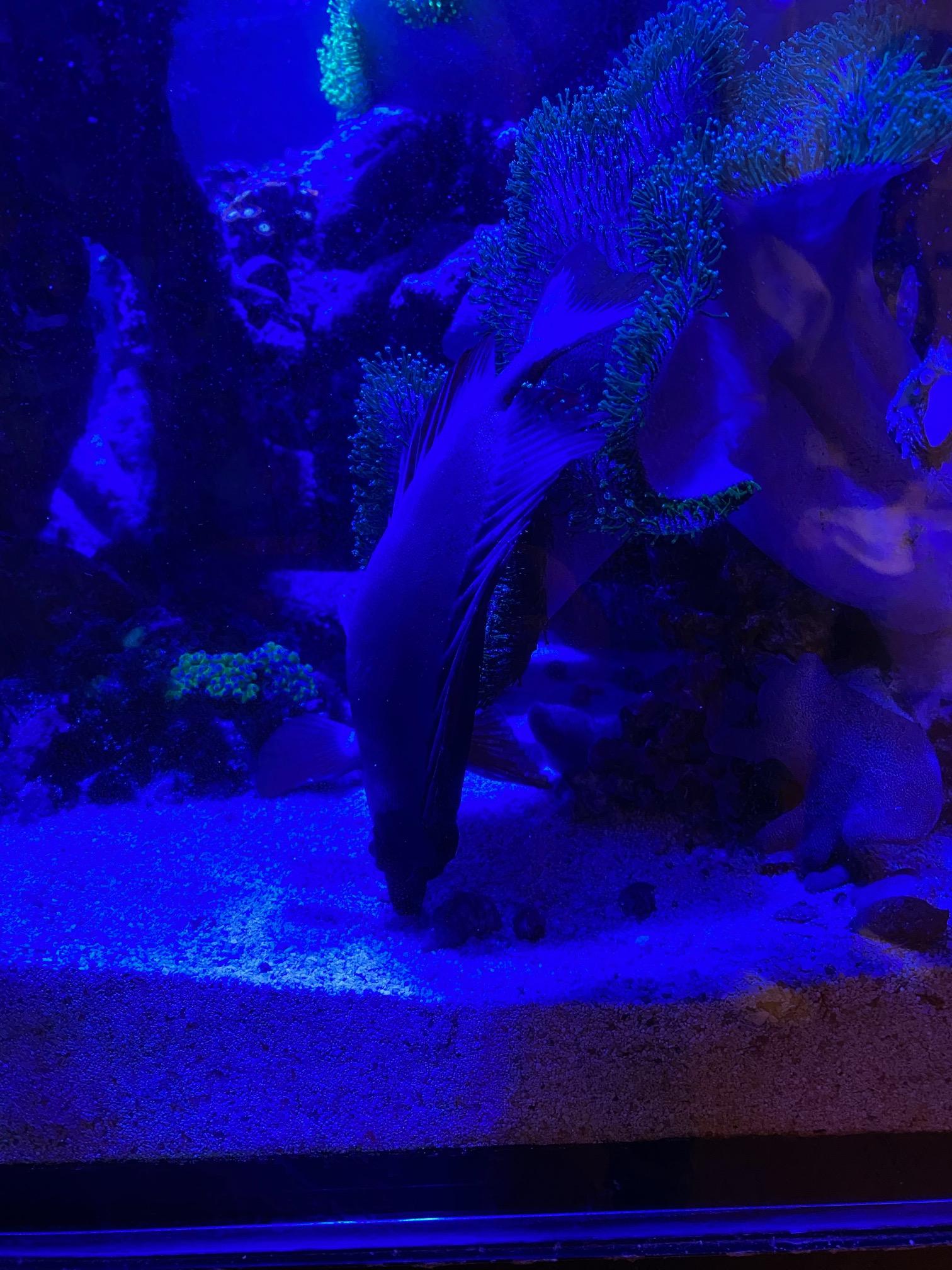I have had a magnificent foxface for many years that has iived through a lot.
I today discovered him in my main tank this evening completely vertical stuck in a rock crevices by a cup containing rock I was mounting a ricordea in. I thought he was dead and went to attempt to touch him or move him and he was able to swim off slightly to the other side of the tank where i have taken these photos and videos of him

He is still breathing and using his two front fins as you can see in this video

I have had this fish for years and have no idea what could have happened here. There were other fish added post QT recently but there were no issues with this particular fish until this evening when i saw him lodged in a strange area.
Could this be internal parasites, possibly damage or something?
When I moved the fish with my hand very gently (yes i love him that much i was willing to get stung) he was able to swim around sort of regularly before ultimately finding another cave or hidden area to shelter in.
I am sick to my stomach about all this and any help would be appreciated.
Thanks,
Willis
I today discovered him in my main tank this evening completely vertical stuck in a rock crevices by a cup containing rock I was mounting a ricordea in. I thought he was dead and went to attempt to touch him or move him and he was able to swim off slightly to the other side of the tank where i have taken these photos and videos of him

He is still breathing and using his two front fins as you can see in this video

I have had this fish for years and have no idea what could have happened here. There were other fish added post QT recently but there were no issues with this particular fish until this evening when i saw him lodged in a strange area.
Could this be internal parasites, possibly damage or something?
When I moved the fish with my hand very gently (yes i love him that much i was willing to get stung) he was able to swim around sort of regularly before ultimately finding another cave or hidden area to shelter in.
I am sick to my stomach about all this and any help would be appreciated.
Thanks,
Willis


















